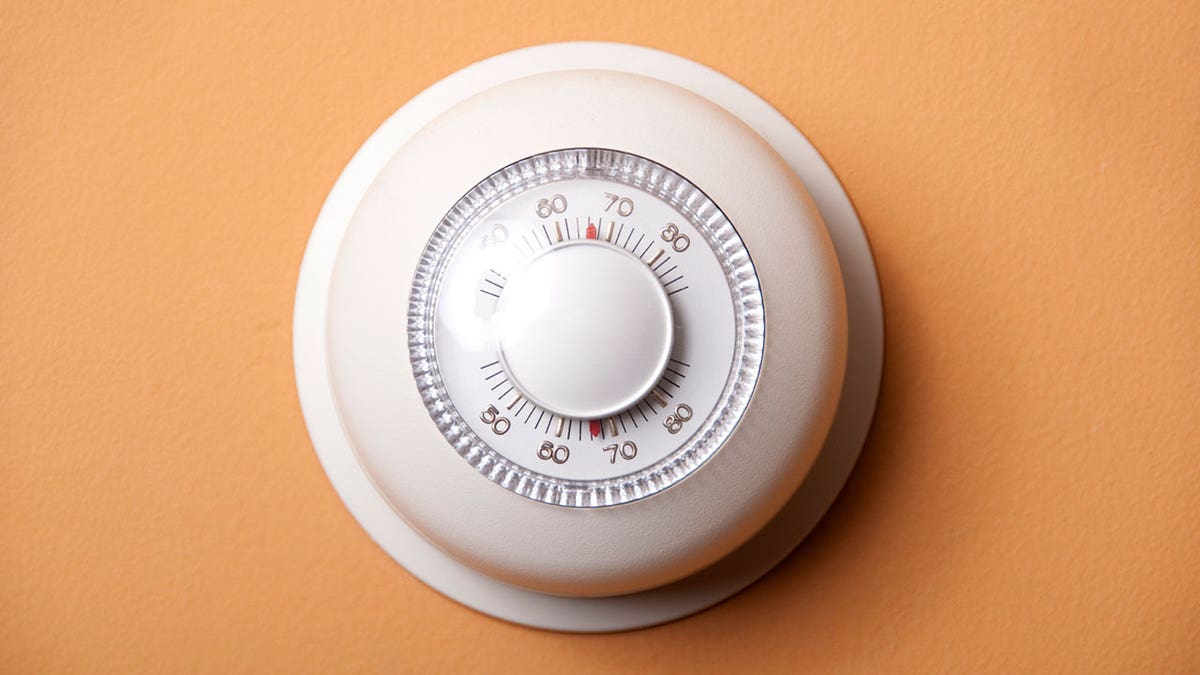
How to prep your home for the most grueling season of them all. (iStock)
Prepping your home for winter is all about energy efficiency, so your heater doesn't have to work as hard to keep it nice and toasty inside. If you give the whole place a good pass before the temperatures really drop, your heating bill will thank you — but so will the windows, walls, and appliances. It's essentially a very basic yearly tune-up to tighten up any pain points in the house.
You probably already know some tricks for battening down the hatches inside (we won't tell anyone if you use those weird sock snakes under the door), but did you know that it's just as important to take a pass outside?
"Your home’s exterior helps keep the indoors warm during the colder months," says Chris Granger, VP at Sears Home Services, who also provided us with the checklist of typical problem areas to address below. Running through it might not all happen in a single day, so you'll want to start sooner rather than later.
Here's how to make a winter home as energy efficient as possible.
Outside
Insulate the roof. It might not be the first thing you think of, but insulating your roof is most cost-effective way to keep heat from escaping and cold air from coming inside. Think of it as a winter hat for your home. This step can be as simple as making sure the insulation in your attic is in good shape (and fixing it where it's not), or as thorough as adding a "radiant barrier" (which looks a little bit like tin foil) underneath it for added protection.
Check the siding. You can't actually insulate your existing siding — it's more about purchasing a siding with good insulation when you build the house — but what you can do is check for problem areas, says Chris: rotten areas on wood siding, cracks where that lovely heated air you're paying for inside might be escaping, or even caulking that's shrunken or cracked over time.
Assess your windows and doors. Pick up a can of caulk on your way home today to zip up any cracks or holes in the door and window frames (check outside and inside), and use weather stripping tape on any severely problematic areas. Change the screens if you have storm windows. And what's that? Your door doesn't totally shut? Chris says it's probably time to replace it.
Clean the gutters. "Cleaning leaves, twigs, dirt and other debris out of your gutters before the first snowfall will help prevent ice dams that could clog your gutters and damage your roof," Chris says.
Check the chimney. A flammable substance called creosote can build up in the chimneys above wood-burning fires. So before you start lighting yours again, have the chimney cleaned — yearly.
Inside
Hang curtains. If, even after calking, any doors or windows produce a draft inside, you can always combat it with heavy curtains or other window treatments.
Change the filters in your HVAC system. Chris says this is "one of the best ways to lower your heating bill," and that you should actually be having it done once a month during heavy-use periods like winter (and once a season otherwise). "Dirty, clogged filters make your HVAC system work harder, leading to potential damage and increased energy bills," he explains. Routine maintenance — a checkup on the whole system every year — is also encouraged.
Clean fridge coils. Bear with us. On the back or bottom of your fridge is a set of "condenser coils" — they look a bit like an intricate grill grate — that cool the air inside by releasing heat from the compressor. "So if they're dirty, the fridge will have to work harder to stay cool," Chris explains. So clean them, using a vacuum or coil brush to dislodge dirt, pet hair, food, and other gross stuff that's adding points to your heating bill.
And door gaskets. This is the rubbery trim on the inside of a fridge door that helps seal it shut. Clean them, and then check by closing a dollar bill in the door — a tight gasket will hold it firmly in place. (If the bill falls, get a replacement gasket.)
Insulate pipes. Chris says this can be as simple as wrapping your pipes in an insulating blanket, so that your heater doesn't have to work as hard to make hot water. (Bonus: It will help prevent your pipes from bursting on really cold nights.)
Deep clean the lint trap on your dryer. A lint brush makes quick work of this (do it after every load!) and will ensure the dryer works as efficiently as possible